Shadow-free skyscrapers would redirect the sun's rays to public plazas
A concept for "shadowless" skyscrapers that redirect sunlight to public spaces could work for tall buildings anywhere in the world, say the London designers behind the proposal.
Architecture firm NBBJ developed proposals for two twisting towers on a side in North Greenwich, London, that bounce light between them down to a public space that would otherwise be in their shadow.
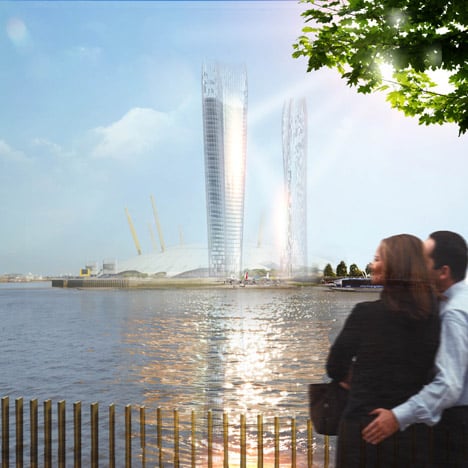
Led by design director Christian Coop, NBBJ's head of computational design David Kosdruy, and architectural assistant James Pinkerton, the team created the design as part of a research project to see if they could make "shadowless" skyscrapers.
"We like to push the boundaries of what is achievable with design computation by developing new applications like the No Shadow Tower," the designers told Dezeen. "The algorithm design for the tower is based on the law of reflection. Our facade has varying angles of panels that distribute light over a certain area at multiple times during the day."
The reflective panels on the twin skyscrapers could reduce the amount of shadow they cast by up to 50 per cent, according to the team. Light would be reflected from the individual panels that form the skin of the building, down into a public space at the base of the towers.
"One of NBBJ's principle concerns is public space and the ways the public use and interact with theses spaces," said the designers. "The No Shadow Tower places public space at the heart of the project, along with human interaction and the impact of skyscrapers at street level."
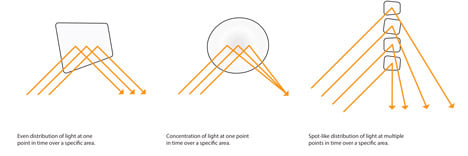
The team said that the proposal could be replicable for almost any site in the world.
"The research that we have undertaken could be applied in many locations in the world, each time creating a different form that would relate to its specific context and solar conditions," they said.
The design for the towers was generated by developing a bespoke algorithm to record the angle of sunlight on the site every day for a year.
This data allowed the team to predict the behaviour of light at different times of the day, and calculate how it would bounce off the two structures. This information was then fed back into a parametric computer model to generate the envelope for the buildings.
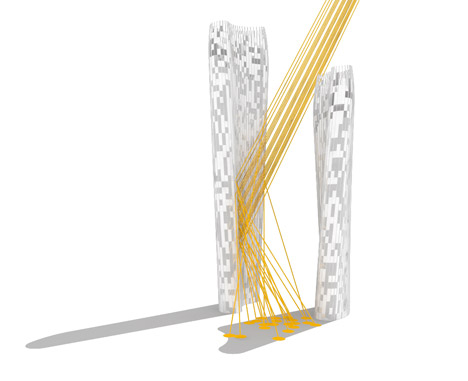
Using individual panels to create the facade would allow sunlight to be reflected pane-by-pane, resulting in pools of light on the ground instead of a large, concentrated area to prevent heat or glare.
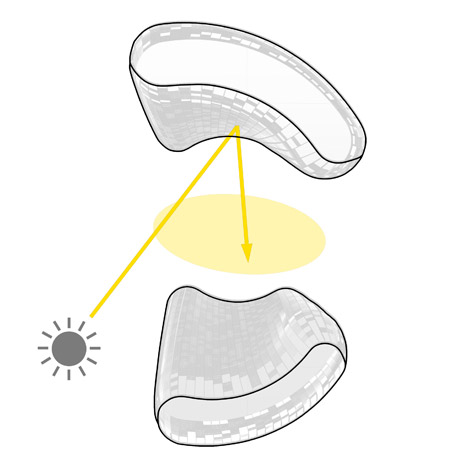
"The construction of the tower would not be the most complicated task in creating this project, the building operates within the same parameters as other tall buildings and the curve in the facade would not pose a significant challenge above what's been achieved for towers that already exist," the project team told Dezeen. "The real task is in the approach, the research that determines the sun's location and angles to create the optimum structure for a particular location."
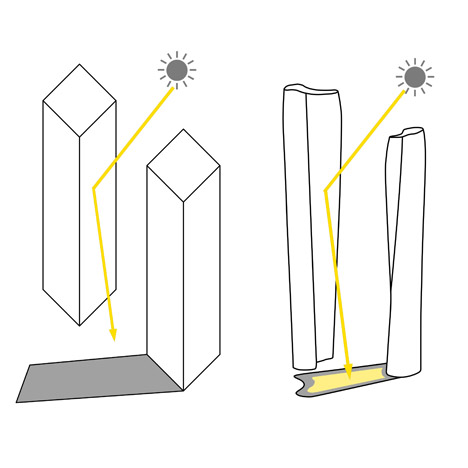
"We see this concept developing and eventually incorporated into towers around the world," they added. "It will add to the possibilities that tall buildings can provide for improved urban environments globally.
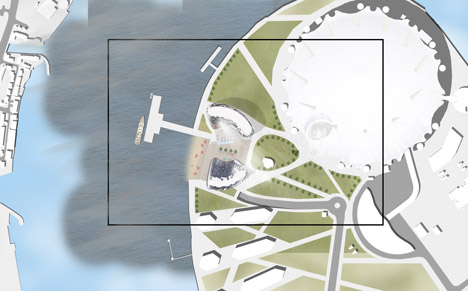
NBBJ submitted the concept for an ideas competition run by New London Architecture, with a view to exploring how skyscrapers can improve public spaces at street level.